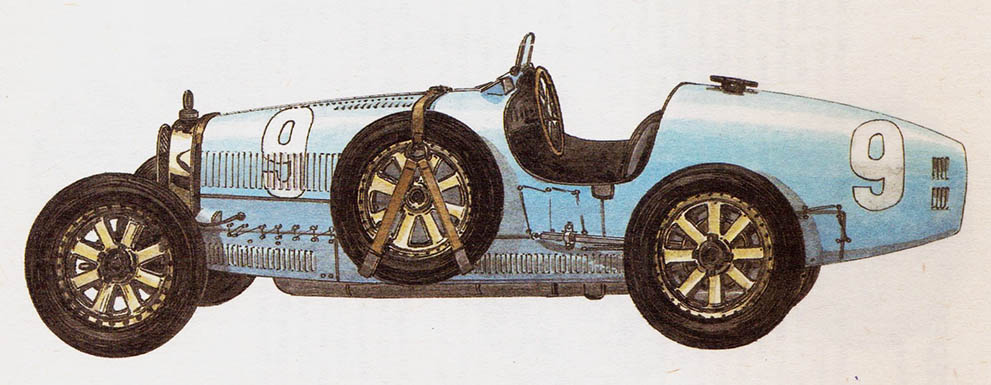Bugatti 39A – year 1926
Automobiles E. Bugatti, Molsheim, France.
W 1926 a new formula, which had been prepared for a long time, entered into force. It limited the engine capacity to 1500 cm3, and the minimum weight is up to 600 kg. Two-seater bodies were still allowed, but with only one player. These laws were intended to reduce the speed of cars, which is the cause of many tragic accidents. Constructors, trying to achieve high power with low capacity, they started recharging their engines again. After much hesitation, Ettore Bugatti also joined them, so far known for its proverbial principle, that “using a compressor in a car is tantamount to improving a full-blooded horse”.

Automobiles E. Bugatti, Molsheim, France.
For Grand Prix races in 1926 years, Bugatti applied the type engine modernization 35 (2 liters, 60 x 88 mm), by reducing the capacity to 1,5 liter using a compressor. The engine consisted of two blocks, four cylinders each. The non-replaceable cylinder head had a camshaft bearing in its upper part. There were two intake and one exhaust valves in each cylinder. The diameter of the cylinders 52 mm and piston stroke 88 mm gave the total capacity 1494 cm3. Crankshaft, composed of eight parts, it was mounted on two needle and three ball bearings. The crankshaft journals also rotated in rolling bearings. The engine with two carburetors developed power 88,3 kW (120 KM) by 5500 RPM and enable safe achievement 7000 RPM. The driving force was transmitted through a multi-plate centrifugal clutch and a four-speed gearbox with a special design. The forging of the rigid front axle had asymmetrical semi-elliptical leaf springs embedded in rectangular openings. Back, The quarter-elliptical springs were attached with their thicker end to the frame behind the bridge. The oblique guide rods helped to transfer the longitudinal driving forces. A novelty were cast aluminum alloy wheels complete with brake drums. Mechanical brakes with automatic clearance adjustment acted on all wheels. A car with a weight 890 kg was reaching speed 185 km/h. Bugatti cars won the 1926 years in three of the five Grand Prix races. With relatively little competition from Jules Goux at medium speed 109,769 km / h he won the French Grand Prix at the track in Miramas and the European Grand Prix in San Sebastian (112,6 km/h). The individual competitor Jean Charavel won the third laurels for Bugatti, riding under the pseudonym 'Sabipa” at the Italian Grand Prix in Monza (137,4 km/h).